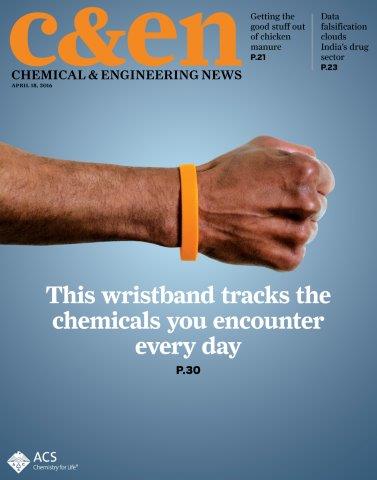FOR IMMEDIATE RELEASE
ACS News Service Weekly PressPac: April 21, 2016
A fashion-friendly way to track chemical exposures
"Tracking everyday chemical exposures"
Chemical & Engineering News
Famous athletes and celebrities promoting charities made silicone wristbands cool more than a decade ago. Now, scientists have developed another use for the colorful, comfortable bands: figuring out what chemicals people are exposed to on a daily basis. The cover article in Chemical & Engineering News (C&EN), the weekly newsmagazine of the American Chemical Society, reports how these trendy accessories could already be helping people.
Britt Erickson, a senior editor at C&EN, notes that environmental scientists have long been testing for organic chemicals in the air, water and soil to try to determine whether they might cause harm. Using various tools from air monitors to hand wipes, they’ve measured pesticides and other contaminants in the environment, in homes and in people’s urine. But these methods can be expensive, difficult for subjects to comply with and don’t detect all the compounds individuals are exposed to.
Now several research projects in Asia, Africa, Europe and the United States are deploying easy-to-wear silicone wristbands to their study participants, from farmers to school children. The bands absorb chemicals from a person’s surroundings, and scientists can then analyze what chemicals were trapped. The data have already yielded helpful findings. A project aiming to evaluate roofers’ exposure to polycyclic aromatic hydrocarbons, which are carcinogenic, led to job-site changes. The personal monitors could gain even more traction as one company works to make them available to the public.


